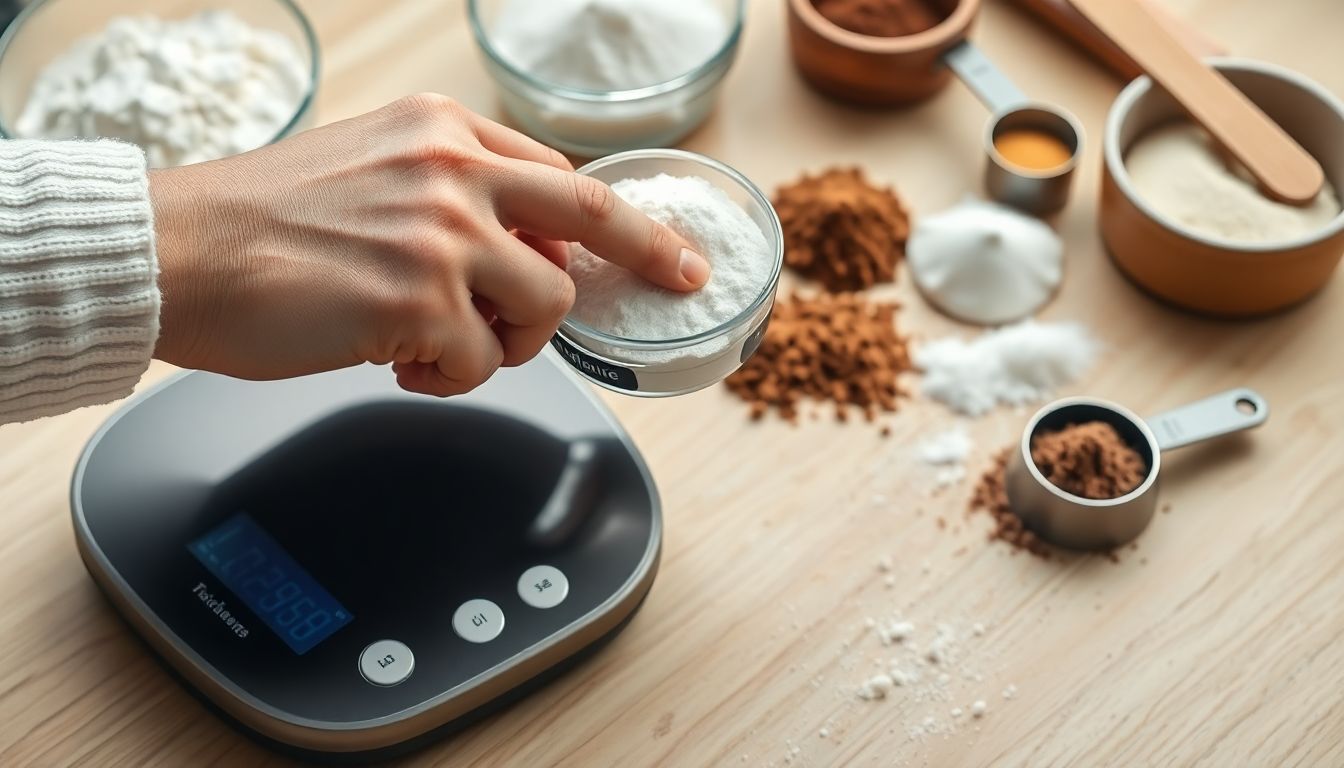Baking Conversions: Mastering Ounces to Grams for Perfect Recipes

Ever feel annoyed by baking recipes? Are measurements confusing? You're not alone! Baking uses both volume (like cups) and weight (like ounces and grams). Getting these right is key. This guide simplifies converting ounces to grams, which will help make you a baking pro!
Understanding Ounces and Grams
What is an Ounce?
An ounce can mean two things. Fluid ounces measure liquids. Weight ounces (or avoirdupois ounces) measure solids. In baking, weight ounces are for things such as flour or sugar. It's important to understand the difference.

What is a Gram?
A gram is a unit of mass. It's part of the metric system. Grams are precise and easy to use. Many recipes now use grams globally. Using grams leads to better baking results.
Why Grams are Preferred for Baking
Grams give more consistent results. This is better than ounces, especially with dry stuff. Measuring by volume (like fluid ounces) can be tricky. How tightly you pack the ingredient changes the amount. Grams remove this issue.
Common Baking Conversions: Ounces to Grams Cheat Sheet
Dry Ingredients Conversion Chart
Here is a simple chart to convert ounces to grams for common dry ingredients:
| Ingredient | 1 Ounce (g) | 2 Ounces (g) | 4 Ounces (g) / (½ cup) | 8 Ounces (g) / (1 cup) |
|---|---|---|---|---|
| Flour | 28 | 57 | 113 | 227 |
| Granulated Sugar | 28 | 57 | 113 | 200 |
| Brown Sugar | 28 | 57 | 113 | 213 |
| Powdered Sugar | 28 | 57 | 113 | 113 |
| Salt | 28 | 57 | 113 | 227 |
| Baking Powder | 28 | 57 | 113 | 227 |
| Baking Soda | 28 | 57 | 113 | 227 |
Liquid Ingredients Conversion Chart
Here is a chart for liquids. Note: 1 fluid ounce of water is about 29.57 grams. Rounding to 30 grams is fine too.
| Ingredient | 1 fl oz (g) | 2 fl oz (g) | 4 fl oz (g) / (½ cup) | 8 fl oz (g) / (1 cup) |
|---|---|---|---|---|
| Water | 30 | 59 | 118 | 237 |
| Milk | 30 | 59 | 118 | 237 |
| Oil | 28 | 55 | 110 | 220 |
| Melted Butter | 28 | 57 | 113 | 227 |
Tips for Using the Conversion Charts
Round to the nearest gram to keep it easy. Using a kitchen scale is the most accurate method. Remember, the numbers in these charts are rough. A small kitchen scale makes a big difference.
Essential Tools for Accurate Measurement
Kitchen Scales: Digital vs. Analog
Digital scales show the weight as a number. Analog scales have a needle. Digital scales are better because they're precise. They also have a tare function. Look for one that holds enough weight. Also, make sure you can read the display easily.

Measuring Cups and Spoons (and Their Limitations)
Measuring cups are handy, but not perfect. Spoons are useful too. However, they don't always give the same result. How you pack flour in a cup changes the weight. Weighing is more accurate.
Tare Function: Your Best Friend
The tare function is super useful. It lets you set the scale to zero with a bowl on it. That way, you only measure what you add. Here’s how it works:
- Put your bowl on the scale.
- Press the "tare" button. The scale should show zero.
- Add your ingredient until you reach the right weight.
Step-by-Step Guide: Converting Recipes
Finding the Right Conversion Factor
One ounce is about 28.35 grams. To convert ounces to grams, multiply by 28.35. For example, 5 ounces is about 141.75 grams (5 x 28.35).
Using Online Conversion Tools
Many websites and apps will help you convert. They're quick and easy. But make sure they come from reliable sources. Don't use sites that look sketchy.
Adjusting Recipes for Metric System
Want to switch a whole recipe to grams? Round the amounts to make it easy. Baking times and temperatures will also need adjustment. Use online tools to convert Fahrenheit to Celsius.
Troubleshooting Common Conversion Mistakes
Confusing Fluid Ounces and Weight Ounces
Know the difference between fluid ounces and weight ounces. Fluid ounces measure liquid. Weight ounces measure solids. Don’t mix them up! For water, 1 fluid ounce is about 30 grams.
Ignoring Ingredient Density
Density matters. A cup of flour weighs differently than a cup of sugar. Always weigh to be sure. Weighing is more accurate than measuring volume.
Scale Calibration and Maintenance
Keep your scale accurate. Check it with a known weight now and then. Most scales let you calibrate them. Follow the instructions that came with your scale.
Conclusion: The Path to Baking Success
Accurate measurements are vital for baking success. Grams are better than ounces. A kitchen scale makes a difference. Know how to convert between ounces and grams. Practice makes perfect! Now, use what you learned and bake something delicious!
